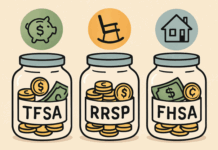Why Do You Even Need a Group Home Business Plan?
- Keeps you focused (so you don’t get lost in the details).
- Helps you avoid mistakes (that could cost time and money).
- Gives you credibility (so others take you seriously).
Step 1: Define Your Mission and Vision
- Is it to give seniors a safe, dignified home?
- To create opportunities for young adults with disabilities?
- To support people transitioning to independent living?
- Mission: “Provide safe, affordable housing with quality care for elderly residents.”
- Vision: “To be the most trusted group home in our community.”
Step 2: Understand Your Market
- How many group homes are already running?
- Who are they serving?
- Where’s the gap?
Step 3: Plan Your Services
- Will you provide meals?
- 24/7 care?
- Medical support?
- Fun and engaging activities?
Step 4: Structure Your Operations
- Do I need team members, and if so, how many?
- The qualifications which they must have?
- How about the processes and daily schedules?
- How do we stay compliant with regional rules?
Step 5: Financial Planning
- Startup expenses: Rent, licenses, furniture, equipment.
- Monthly costs: Salaries, food, supplies, utilities.
- Revenue heads: Resident fees, government programs, and insurance.
- Profit predictions: How much do you anticipate earning vs. spending?
Startup Costs
| Expense Category | Estimated Cost (USD) |
| Property Lease/Deposit | $3,000–$10,000 |
| Renovation & Safety Upgrades | $5,000–$25,000 |
| Furniture (beds, mattresses, tables) | $4,000–$12,000 |
| Kitchen Equipment | $1,500–$3,000 |
| Licensing Fees | $500–$7,500 (varies by state) |
| Insurance | $2,000–$6,000 |
| Staff Hiring & Training | $3,000–$15,000 |
| Medical/Safety Equipment | $800–$3,000 |
| Marketing & Website | $500–$2,500 |
Total Estimated Startup Costs: $20,000–$70,000+
Monthly Operating Costs
- Salaries
- Food & utilities
- Insurance
- Transportation
- Activities
- Maintenance
Revenue Streams
- Resident fees (primary income)
- Medicaid waiver programs
- State-funded support
- Private pay
- Partnerships with social agencies
Total Estimated Startup Costs: $20,000–$70,000+
Step 6: Marketing Strategy
- Create a professional but easy-to-navigate website.
- Share testimonials and success stories.
- Network with hospitals, clinics, and social workers.
- Encourage word-of-mouth referrals.
Step 7: Legal and Compliance
- Licenses and permits
- Health and safety codes
- Staff certifications
Step 8: Growth Strategy
- Do you want to open more homes in nearby cities?
- Should we add specialized services like therapy or medical care?
- How can we keep improving resident satisfaction year after year?
Step 9: Staffing Plan + Job Descriptions
A group home is only as strong as its staff.
Basic Staffing Structure
- Administrator / Director
Oversees operations, compliance, budgets, and staff. - Direct Support Professionals (DSPs)
Provide daily care, supervision, meal prep, transportation. - Certified Nursing Assistant (if medical support is offered)
Handles basic medical needs, monitoring, mobility support. - Case Manager
Coordinates resident goals, family communication, and progress reports. - Cook / Housekeeper (optional)
Handles meals and cleanliness.
Sample Job Descriptions
Direct Support Professional (DSP)
- Assist residents with daily living
- Ensure medication reminders
- Document incidents & progress
- Maintain a safe environment
Administrator
- Manage finances and staffing
- Ensure compliance with state regulations
- Handle licensing inspections
- Lead marketing and admissions
Case Manager
- Develop care plans
- Communicate with families and agencies
- Monitor resident progress
Wrapping It Up
- Who are you serving?
- How will you serve them?
- How will you stay financially strong?
FAQs:
1. What is a group home business plan?
A group home business plan is a detailed document that outlines your mission, target residents, services, operations, staffing, and financial projections. It helps you stay organized, meet licensing requirements, and secure funding. A strong plan also improves long-term profitability and compliance.
2. How much does it cost to start a group home business?
Starting a group home typically costs between $20,000 and $70,000+, depending on property size, location, staffing, and licensing rules. Major expenses include rent, renovations, furniture, insurance, and staff training. Proper budgeting is essential for sustainability.
3. Is a group home business profitable?
Yes, a group home business can be profitable when occupancy rates are high and expenses are well-managed. Revenue often comes from resident fees, Medicaid waiver programs, state funding, and private pay. Long-term success depends on compliance, quality care, and efficient operations.
4. What licenses are required to open a group home?
Licensing requirements vary by state and resident type but usually include health department approvals, fire and safety inspections, zoning permits, and staff certifications. Including licensing and compliance planning in your business plan improves approval chances and credibility.
5. How do I attract residents to my group home?
Attract residents by building trust through a professional website, referrals from social workers, partnerships with hospitals, and positive testimonials. Clear communication about services, safety, and care quality helps families make confident decisions.
Find a Home-Based Business to Start-Up >>> Hundreds of Business Listings.
















































